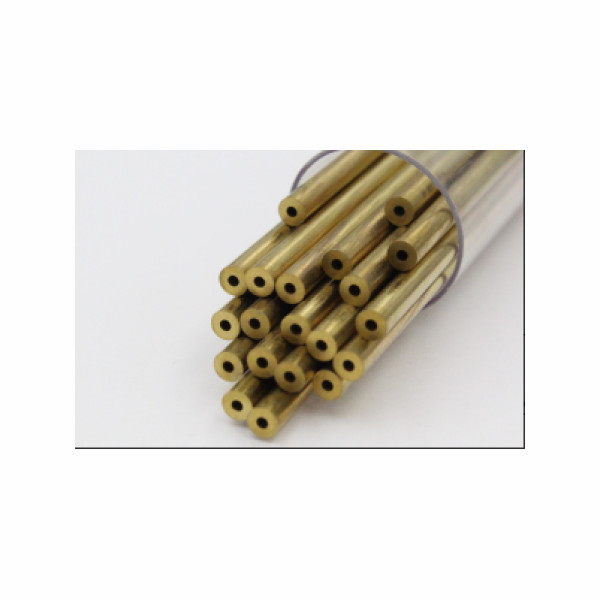Single channel brass tube
Single channel brass tube

Едноканална месингова тръбичка 0.2х300 HGH
SKU: 7398
Едноканална месингова тръбичка с диаметър 0.2мм и дължина 300мм
Select a modelIn Stock
• If you order today, the product will be delivered within 1 day.
• For orders over BGN 200 shipping is free.
Single-channel brass tubes are specialized tools used in electrical discharge machining (EDM) for precision drilling of holes in various metal parts. These tubes, made of high-quality brass, feature excellent electrical conductivity and wear resistance, making them a preferred choice in modern metalworking.
Characteristics of single-channel brass tubes
•Material: Made of CuZn37 alloy, which provides high electrical conductivity and mechanical strength.
•Design: The single-channel structure allows for efficient delivery of dielectric fluid through the central hole, aiding cooling and removal of eroded material.
•Dimensions: Available in a variety of diameters and lengths, tailored to the specific requirements of the workpiece. For example, tubes with diameters from 3 mm to 80 mm are available, manufactured according to the EN 12449 standard.
Applications
Single-channel brass tubes are widely used in industries where high precision and processing quality are required:
•Mechanical engineering: Drilling fine holes in machine components and tools.
•Aviation industry: Processing of parts with high demands on accuracy and reliability.
•Medical equipment: Manufacturing of medical instruments and implants with microscopic holes.
Advantages of using single-channel brass tubes
•High precision: Allows the creation of holes with minimal tolerances and a smooth surface.
•Efficiency: Thanks to the excellent electrical conductivity of brass, the erosion process is faster and with less wear on the tube.
•Flexibility: The variety of sizes and shapes allows the processing of different types of holes in a variety of materials.
Maintenance and storage
To ensure long-lasting and efficient operation of single-channel brass tubes, it is important to follow the following recommendations:
•Storage: Keep the tubes in a dry and clean environment to prevent oxidation and contamination.
•Cleaning: After use, clean the tubes of residue to ensure optimal conductivity for the next use.
•Inspection: Regularly check the tubes for signs of wear or damage and replace them if necessary.
